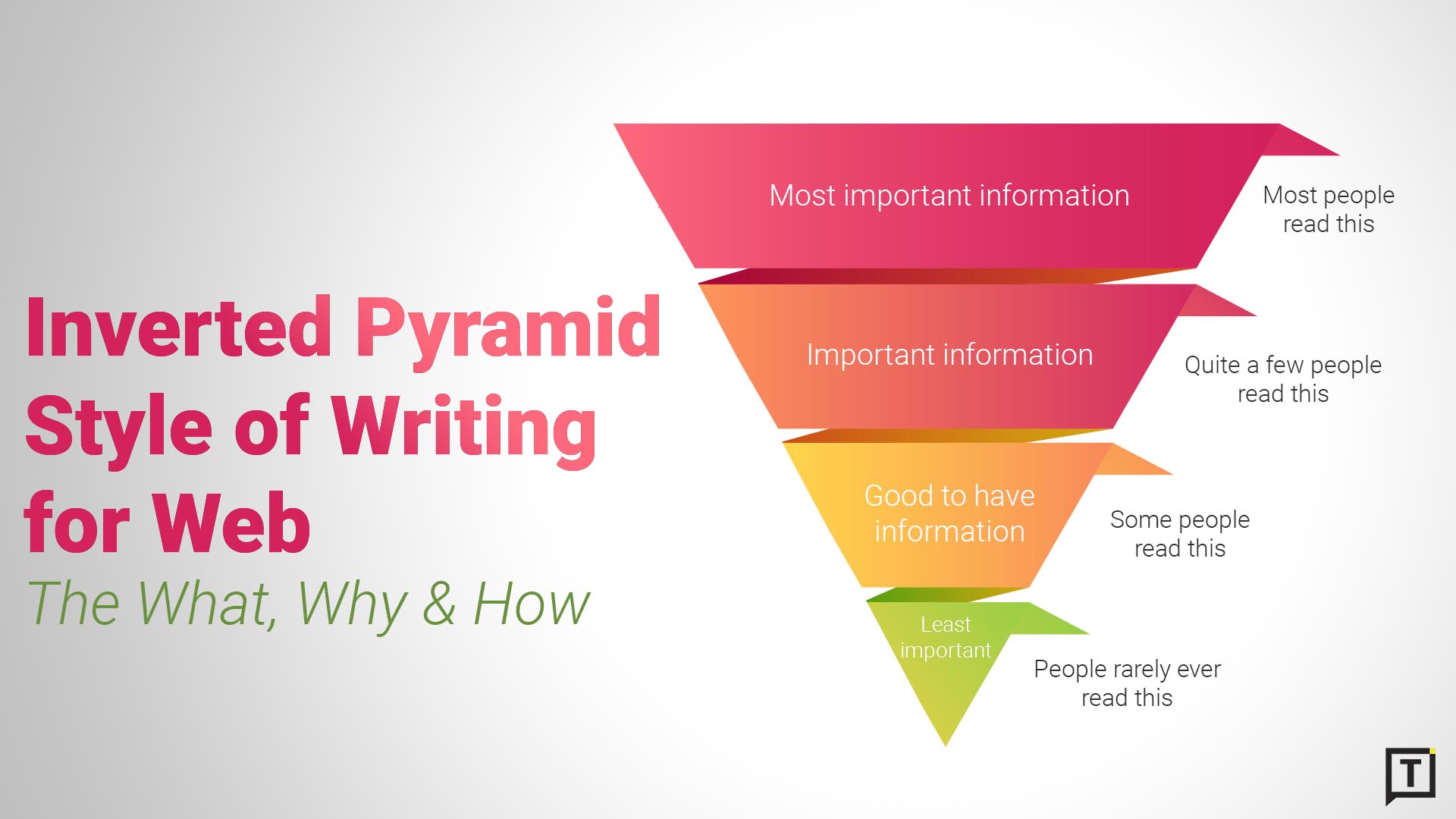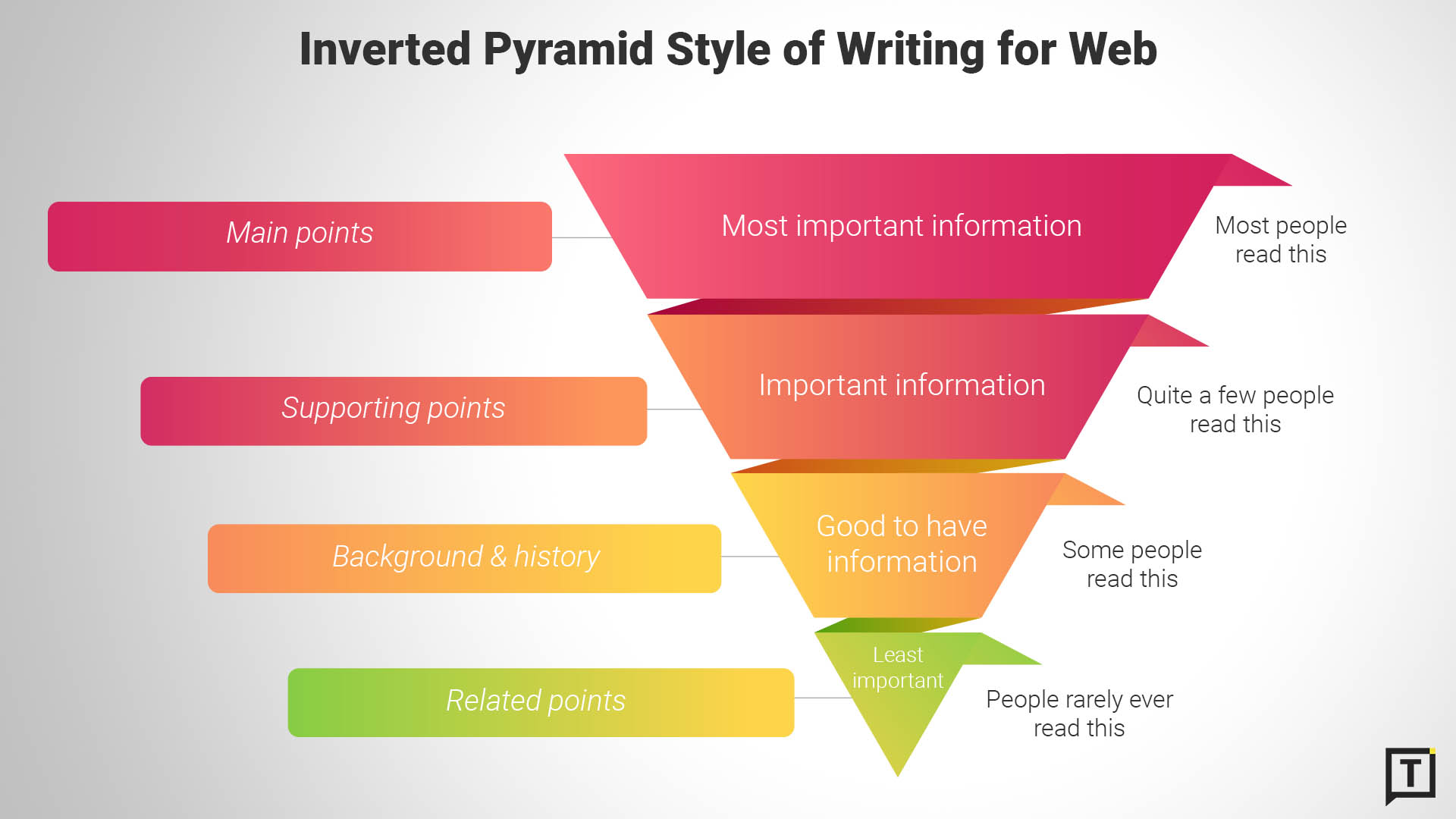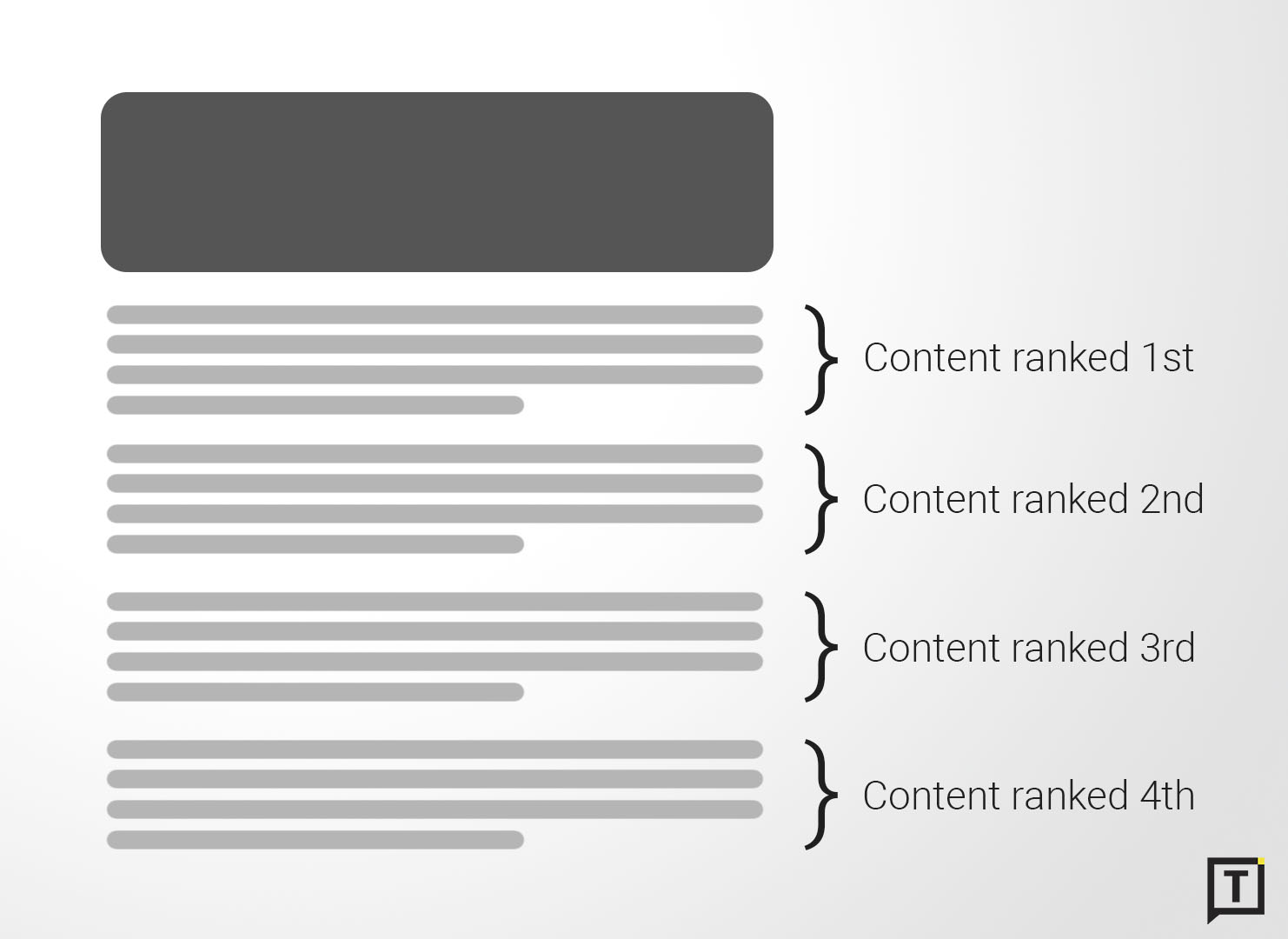
What is the inverted pyramid style of writing?
The inverted pyramid style of writing for the web refers to the writing structure where the most important information is presented first.
The who, what, where, why are explained first. Followed by the rest of the details in decreasing order of importance.
Take for example a Techcrunch article I have used for reference.

As you can see, the very first sentence basically covers the key information of what the article is about. The rest of the content provides additional information – background, context, related information, etc.
Hence, the inverted pyramid looks something like this:

I have represented the inverted pyramid above, with three sets of information:
- Left – Narrative
- Centre – The Inverted Pyramid model
- Right – Reader behaviour
Benefits of the inverted pyramid style of writing
The benefits of this style of writing can be summarised as below.
1. Decreases reader effort
Writing the key information first makes it easier for the reader to understand what your article is about.
And, anything that makes it easier for the reader to consume your content, is going to be of advantage to you as a writer.
2. Main point is almost always conveyed
Putting your key information in the beginning almost always confirms that your reader will consume it.
And as a writer on the web, this helps you push your content value to a larger audience.
3. Front loads keyword
If you know about SEO, then you would likely know that having your keywords in the first paragraph helps a lot.
With the structure of writing that the inverted pyramid follows, it would definitely happen. This adds an additional benefit from an SEO point of view.
4. Helps readers who skim read
Almost every reader on the web skim reads.
While using the inverted pyramid style of writing, you help skim readers by providing them the most important information initially.
Also, since every subsequent paragraph follows the structure of providing the most important information first, it turns out to be heaven for skim readers.
5. Deals with the F pattern
A famous study by Nielsen Norman Group (NNG) found that most readers on the web, read content in an “F pattern”.
Through tracking the eyeball movements of the participants in their study, NNG found that the dominant reading pattern has the following three components:
- horizontal movement
- second horizontal movement
- vertical movement
![]()
As you can see from the heatmap above, the top content gets the most ‘eyeballs’.
And since the inverted pyramid style is all about “most important content first”, your writing style is automatically adapted to suit the most common reader behaviour.
6. Helps you build a mental model
Continuously writing in this style helps you build a mental model of what your article should look like.
Identifying your key points and structuring them along different paragraphs helps you refine your writing down to the most important words.
How to write using the inverted pyramid style of writing
1. Identify your key points
Well, easy as that.
Identify your key points and follow the following steps:
- Place the most important information of your article in the first paragraph.
- And, place the most important information of each paragraph, in its first sentence.
2. Rank your pointers
Once you have identified the key points, rank them in order of importance.
Use this ‘rank-list’ as your reference while writing the article.

3. Limit each paragraph to one key point
After you have ‘ranked’ your pointers, make sure you do not mix up information. Limit each paragraph to one key point.
This makes it easier to skim read and also makes your writing crisp.
4. Front-load your headline
While writing your section and sub-section headlines, include the important keywords/information first.
e.g. Instead of “Why you should use blue colour to paint your house”, go with “Why blue paint suits your house better”.
When you should NOT use the inverted pyramid style of writing
Obviously there are lots of cases when this isn’t the best structure to follow while writing content.
Some examples:
- Academic papers – they are all about following a specific structure. The conclusion, and hence the most important part, comes last.
- Novels & stories – wouldn’t make sense to start with the climax, would it?
- Listicles – while listicles follow a different structure of presentation, you can curate your paragraphs within to follow the inverted pyramid model.
- How to articles – you do have to follow the step by step process. A recipe cannot start with the final step first.
- Insightful articles & case studies – when the information delves deep into the topic and has lots of explanations to convey, our inverted pyramid model isn’t the best option.
Want to join my small but awesome community? Just drop in your email below and I’ll buzz you in.
Infographic vector created by freepik - www.freepik.com Photo by Zoltan Tasi on Unsplash



